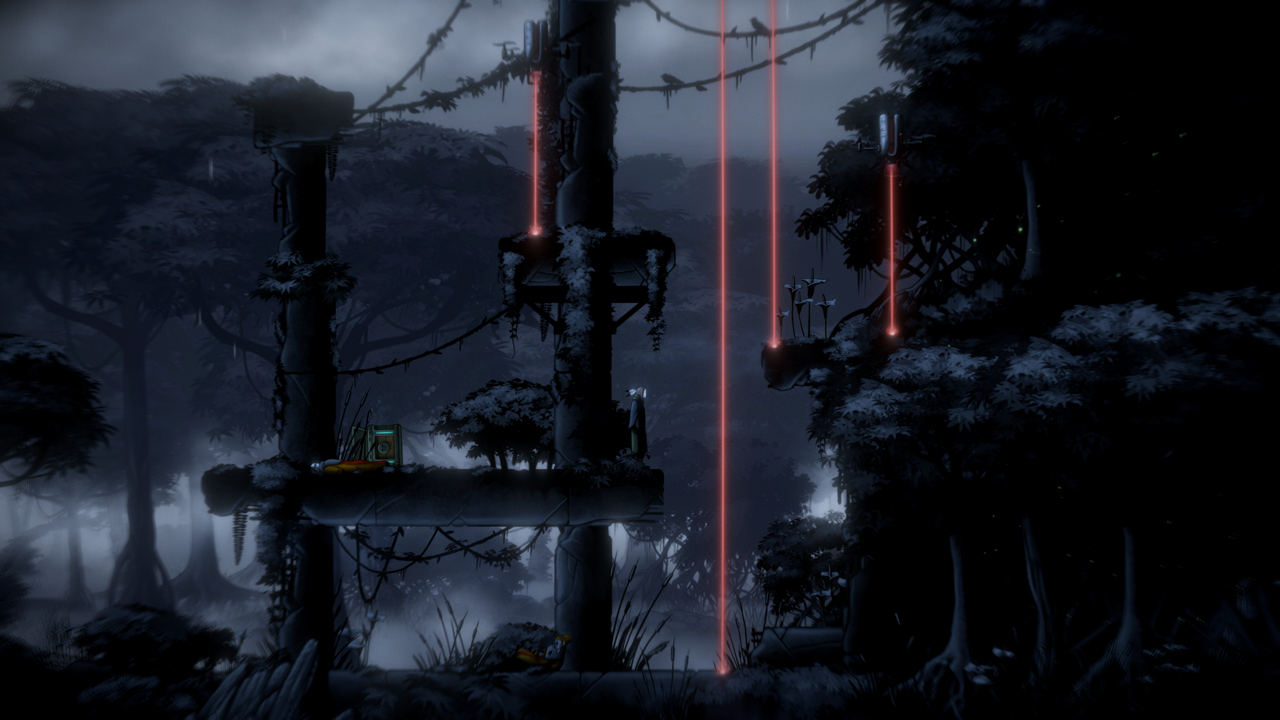The Library of Babel gets so much right, but the gameplay lets it down.
My first impression upon loading up The Library of Babel (after the initial screen that gives you lots of dialogue with little context) was that this was a really pretty game. From the early cutscenes and initial jungle that you walk through to the sun-kissed temples and even dank sewers, this is a beautiful product. Those early impressions were somewhat dashed though, as the actual minute-to-minute gameplay has a tendency to disappoint thanks to so many missteps.
You play as Ludovik, a seeker in a world long after the end of humanity where robots are the planet’s main inhabitants. You have been tasked with investigating a violent cult run by the powerful Kabor, just outside a major settlement. Almost as soon as you arrive, things kick off with a member of the cult breaking into the Matriarch’s chamber, murdering a citizen, and then turning the gun on themselves. You are quickly sent out to find out what else the cult has been up to, and what can be done to stop them.

There’s a clue in your character’s title: seeker. You find, discover, and learn. You are not a fighter, and the gameplay absolutely bears this out. Once you are outside the main settlement, you run through the 2D world, platforming your way forward, speaking with other characters, solving puzzles, and above all avoiding the cult’s attention.
Every now and then on your travels, you’ll come across enemy encampments, and you’ll need to sneak through them, sometimes pressing buttons and moving boxes to open a path. All the while you’ll need to remain out of sight of enemies as you will be shot on sight and immediately die. Death isn’t always a huge inconvenience, as you simply respawn at a nearby checkpoint that you have activated, but with a little of your money gone. Sometimes this can be a bit more irritating, as the checkpoints are a little inconsistent, with some being placed considerably further apart than others, forcing you to replay sections you’ve already done. Luckily, most of the time any doors you’ve unlocked will remain unlocked meaning you’ll have a smoother ride the second time around.
With all this said, the stealth sections just aren’t fun. I found myself crouching behind boxes for silly amounts of time as I waited for a pair of guards’ paths to sync up in a way that would allow me to proceed. The drones that detect movement would move back and forth seemingly at random, catching me when I’d be making a jump. Local wildlife that screech, causing you to be killed would see me the split second they appear on the screen, giving me no chance to respond.

This is the biggest let down of the game. I should feel like I’m making a daring run for the next cover, not getting caught out by a guard that I didn’t have a chance to see. Even the puzzles you solve in these sections aren’t enjoyable, almost always boiling down to drag a box onto a pressure pad to open a door so I can press a button to open another door. It’s formulaic and lacks any of the creativity on display in the visuals and world building.
The controls don’t help either. You can run, crawl, and jump for the most part. Crawling is useful for finding hidden money stashes and ways to progress, although you often won’t be able to see the path forward without crawling against all the different walls to find one. You’ll spend a lot of time jumping and grabbing ledges though, and most of the time this works well enough. Far too often though, Ludovik simply won’t grab a ledge, or jumps straight up instead of onto a box, or occasionally doesn’t jump at all. This is infuriating during some of the stealth sections, or when you need to quickly manoeuvre between deadly enemies. Being able to move around quickly is key to surviving a stealth encounter, and finding that I’m unable to grab the next ledge up for no good reason really sapped my enjoyment.

This is a pity as I loved the world, character designs, and art direction so much. Reaching a new area was a joy because even though the overall theme of jungles remained, the areas were visually distinct. I was particularly keen on the hub area, with its almost overgrown cyberpunk motif, covered in neon lights and dilapidated old technology. The characters are well designed and animated too, and though many of the ancillary ones look alike, major ones like the Matriarch’s wired-in robotic head and Kabor’s hulking, antler adorned form really stand out as having had a great deal of attention paid to their design. Music too is excellent, fitting the area you’re in perfectly, from the eerie melodic tones of the sewers, to the peaceful tranquillity of the night time forests. As a piece of art, The Library of Babel is excellent.
All this beauty can’t change the disappointment of the gameplay though, and I found my enjoyment of the world was brought crashing back down to Earth each time I needed to sneak through another encampment, avoid wildly spinning electric insects, or find another barely visible path forward. Things like side quests, and a drone that reveals hidden treasures are nice additions, but with those core problems still being present, I’d have a hard time recommending this one.
The Library of Babel is available now on PC, Xbox, Playstation, and Nintendo Switch.
Comments are closed.